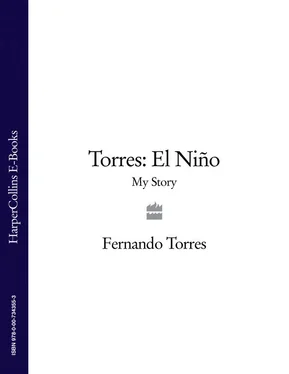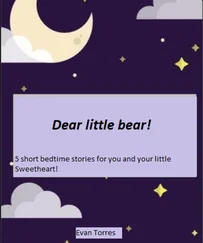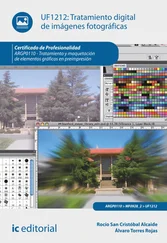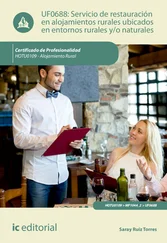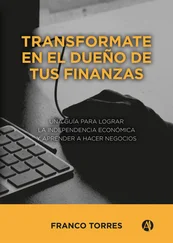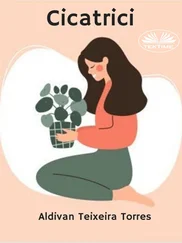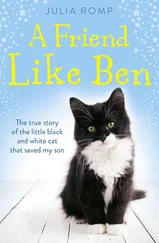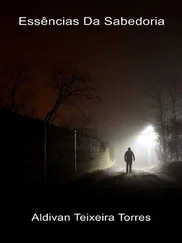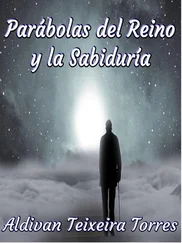I always thought that I would play at Anfield as a visitor, never as part of the home team. I would compare the old Highbury to Anfield; I would have loved to have played there. That respect for history and tradition is something that should be applauded. Reyes and Cesc Fabregas told me about the reverence shown during the final few games at Arsenal’s old ground. It’s like Anfield, a cathedral to the game. You want to be able to tell your friends: ‘I’ve been there, where so many glorious pages of footballing history were written.’
Destiny seemed to have decided that if I ever left Atlético Madrid it would be for Liverpool. Having turned down various proposals, Rafa Benítez’s call made me reflect and start to have doubts for the first time. I decided that it was the right moment to leave and I asked Miguel-Ángel Gil Marín, Atlético’s owner, to listen to Liverpool’s offer.
I didn’t know that Liverpool was the most successful club in England. Since Rafa went to Anfield and took Spanish players with him, I had got to know Liverpool better but I didn’t realise that. I remember the 2001 Uefa Cup final against Alavés but I thought they were some way behind the teams that I assumed dominated English football: Manchester United and Arsenal. I was surprised when I found out just how incredible their history was and how many titles they had won.
Istanbul revealed Liverpool’s true spirit. The Spanish television channel Canal Plus broadcast a report about the history of the club after they had won their fifth European Cup in Turkey—about the tragedies at Heysel and Hillsborough, the connection between players and fans, the struggle against adversity. The commitment to overcome difficulties and stand tall, the ability to face up to every situation and beat it, is reserved for true giants. Liverpool FC is a special and complete club, one that plays and fights, that gives everything for the people who follow it.
I had heard the names that are most associated with Liverpool: Dalglish, Rush, Souness, Keegan, Owen, Fowler, McManaman, Hamann…As someone who has always followed those players who come through the ranks at their clubs, I was especially interested in a young lad from the youth team called Steven Gerrard. In the 1980s Liverpool were practically invincible. I was told that the European ban they suffered after Heysel made them stronger domestically, even though they had an important handicap with less of a presence on the international club stage. You still find Liverpool fans all over the world though and I think the club needs to keep growing by encouraging that and making sure they continue to be known worldwide. Until I signed for Liverpool, I never knew they were so big. And I felt like they didn’t have much of a presence beyond
Merseyside either; attention was focused on London and Manchester. But then, suddenly, Liverpool were back in the spotlight. A lot of that is down to Rafa Benítez, who has changed things at the club and revived some of the old Liverpool philosophy, giving the club a global presence again.
Liverpool’s two Champions League finals remain fresh in my mind. In Istanbul and Athens the values that embody the club shone through. I turned off the television at half time in the 2005 final. It seemed to be all over. Everything pointed to the second half being a waste of time, just an exercise in running down the clock. But when I got to the restaurant where I’d arranged to meet with friends, I asked them to put the television on and I couldn’t believe it. I don’t know where they found the strength and character to take that game into extra-time and penalties. When Liverpool got to the final in Greece two years later, I watched the whole game at home. After what had happened the first time, I wasn’t going to miss a minute. I wanted Liverpool to win because I had friends in the team. Once again, things looked bleak but when Dirk Kuyt scored I thought that another comeback was possible. In fact, I’m convinced that if the referee hadn’t cut the game short by a few seconds, the Reds would have taken things into extra-time again. The equaliser was possible and a victory likely.
Watching those two nights unfold on television taught me my first lesson about the club I would later join: at Liverpool, no one gives up and everything’s possible.
It was a cold winter afternoon, just after Christmas. We had eaten in Dehesa de la Villa, the neighbourhood in Madrid where my grandparents lived, and during the meal someone asked: ‘Can we go and see Atlético play?’
They were playing at home against Compostela. It was the perfect game for us, a combination of our commitment to the red and white of Atlético and the pull of home—my father is from a small village near Santiago de Compostela in Galicia, up in the northwest of Spain. My grandfather Eulalio and my father started talking about it, and before I knew it I was sitting in the back of the family car, seat belt across my chest, heading for the banks of the Manzanares river—to the neighbourhood of La Arganzuela where the Vicente Calderón stadium stands.
It wasn’t just another day for me. It was the first time I had been to see Atlético Madrid live. Together with my grandfather—my inspiration when it came to supporting Atlético—and my father, we bought three tickets to see a side that was anything but consistent. It all started at 5pm on 15 January 1995 and ended 1-1. Abadía opened the scoring for Compostela and ‘The Train’ Valencia, our Colombian centre-forward, equalised. I remember watching Caminero, Simeone, Solozábal and López…players who would go on to win an historic double the following season.
I wasn’t hooked when I left the stadium. It was cold, there wasn’t much excitement and the flat atmosphere in the stands didn’t help. The draw meant I left as I had arrived, without really catching the bug.
And yet with every passing day I felt happier that I had chosen Atlético. I was fast becoming an Atlético like my grandfather. I felt it. And, just as I saw my first game at the age often, a few months later, in July 1995, I had my first trial to play for them, having previously played for a team called Rayo 13 in Fuenlabrada. After signing up and being selected for the trial, I went along with my father and my brother Isra. The trial was held on the gravel pitches in Parque de las Cruces in the neighbourhood of Las Águilas in the south of the city. It was a summer afternoon, a Saturday at 3pm. My father had driven down there earlier in the day to check it out and make sure we didn’t get lost en route but we still managed to turn up a couple of hours early.
The trial consisted of eleven-a-side games split into two twenty-minute halves. There were a lot of kids and not much time. It wasn’t exactly an ideal way to prove yourself but things went well for me. I scored a lot of goals and I was very happy with the way I played. Amongst those choosing which kids would be selected were some of the club’s legends, men I would later spend years training with like Víctor Peligros and Manolo Briñas. At the end of the trial they told us that the kids who were chosen would be on a list they’d post at the Calderón in mid-August. It wasn’t something that obsessed me, far from it. At that age I don’t think failure is something that scares you. If I didn’t get chosen I would have just gone back to playing football in my neighbourhood, happy as I had ever been.
Time went by and the family holiday in Galicia meant that we couldn’t drop by the Calderón to see if I had been chosen. My father decided to phone the club to find out. He was the one that gave me the good news, but you would never have thought it.
‘You’ve been selected,’ he said, deadpan. ‘They’ve picked six kids and you’re one of them. You have to go to Colegio Amorós in the first week of September for another trial to confirm everything.’
Читать дальше
